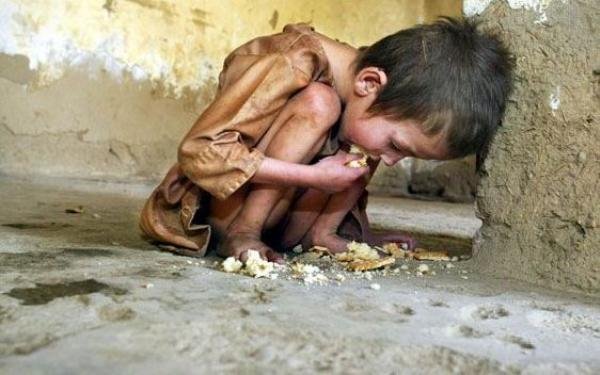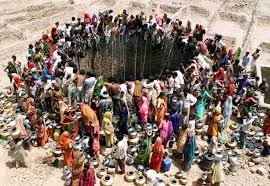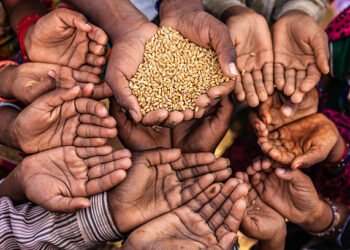The Global Multidimensional Poverty Index provides valuable insights into the nature of poverty.
The latest Global Multidimensional Poverty Index (MPI) report sheds light on a critical issue: the growing poverty amidst violent conflicts. Conflict drives poverty, and the link between the two is evident in countries affected by wars.
Let’s discuss the challenges they face, and what these mean for the future.
Poverty in Numbers
There are 1.1 billion poor people across 112 countries. Out of these 1.1 billion, over half are children. This is a huge number. It means 584 million children are deprived in multiple ways. The report highlights that 27.9 percent of children worldwide live in poverty, while only 13.5 percent of adults do. Poverty hits children the hardest.
More than 83 percent of the poor live in rural areas. Rural areas have significantly more poor people compared to urban areas. Globally, 28 percent of people in rural areas are poor. In comparison, only 6.6 percent of the urban population falls under the poverty line. In regions like Sub-Saharan Africa and South Asia, the poverty gap between rural and urban areas is significant.
Sub-Saharan Africa has 553 million people living in poverty. South Asia follows closely with 402 million. Together, these regions are home to 83.2 percent of the world’s poor. South Asia and Sub-Saharan Africa have the largest share of people living in poverty.
Interestingly, most of the world’s poor do not live in low-income countries. Nearly two-thirds of them live in middle-income countries. There are 749 million people in middle-income countries who are multidimensionally poor. This highlights that poverty is not just about income but about living conditions and access to basic services.
Key Facts on the Poorest Groups
Below is a table of key facts summarizing the report’s findings on the poorest groups:
| Fact | Number/Percentage |
|---|---|
| Total Poor People | 1.1 billion |
| Poor Children (under 18) | 584 million (Over half of all poor people) |
| Poor in Rural Areas | 962 million (83.7%) |
| Poor in Sub-Saharan Africa | 553 million |
| Poor in South Asia | 402 million |
| Poor in Middle-Income Countries | 749 million (65.2%) |
| Poor in Low-Income Countries | 400 million (34.8%) |
What Deprivations Do Poor People Experience?
The poorest people experience multiple deprivations. They lack basic services such as adequate sanitation, proper housing, and cooking fuel. The report reveals that 828 million poor people lack adequate sanitation. Another 886 million lack housing. Furthermore, 998 million lack cooking fuel. These are essential requirements for a basic standard of living, yet so many people lack them.
Undernutrition is a significant problem. More than half of the poor people, around 637 million, live with an undernourished person. In South Asia, 272 million people live in households where at least one person is undernourished. Similarly, in Sub-Saharan Africa, 256 million poor people face the same problem. Undernutrition affects physical health, mental development, and opportunities for children and adults alike.
Another major issue is education. Around 590 million poor people live in households where no one has completed six years of schooling. This lack of education is an obstacle to escaping poverty. Children, in particular, are greatly affected by this deprivation. A total of 482 million poor people live in households where one or more children are out of school. Education is a pathway out of poverty, but many poor people are missing out on this opportunity.
Electricity and Clean Water
Access to electricity is a luxury for many poor people. About 579 million poor people live without electricity. This affects their ability to study, work, and improve their living conditions. Electricity is essential for cooking, studying, and powering basic appliances.
The lack of clean water is another significant deprivation. Nearly half of all poor people, around 513 million, do not have an improved source of drinking water. Clean water is essential for health and wellbeing. Without it, poor communities face higher risks of diseases and poor health outcomes.
Poverty in Conflict Areas
The MPI report finds that poverty is much worse in conflict-affected areas. Out of the 1.1 billion poor people, 218 million live in war-affected countries. Nearly 40 percent of the poor people live in countries experiencing war, fragility, or low peacefulness. Countries in conflict see higher levels of poverty due to the destruction of infrastructure, the collapse of services, and the displacement of people.
In countries affected by war, the incidence of poverty is 34.8 percent. This is much higher than the 10.9 percent in countries that are not affected by war. Conflict-affected countries are more deprived in every MPI indicator, including nutrition, electricity, water, and sanitation. For example, 26.9 percent of the population in war-affected countries are poor and lack access to electricity. In comparison, only 5.6 percent of the population in non-conflict countries face this deprivation.
Afghanistan’s Struggle with Poverty
The report also highlights the worsening poverty in Afghanistan. The country has faced prolonged conflict, leading to a significant increase in poverty. The incidence of poverty rose by more than 5 percentage points from 2015 to 2023. Nearly two-thirds of Afghans (64.9 percent) are now poor. Conflict has made it harder for people to meet their basic needs, with children particularly affected.
The education crisis in Afghanistan is alarming. The proportion of people living with out-of-school children increased from 35 percent to 43.8 percent between 2015 and 2023. The ban on girls’ education will only worsen this crisis. Education is crucial for breaking the cycle of poverty, but many children in Afghanistan are being denied this right.
Slow Progress in Conflict Areas
Poverty reduction is slowest in conflict-affected areas. People living in these settings are being left behind. The average annual reduction rate in MPI value is 7.8 percent in non-conflict countries. However, in war-affected countries, this rate is only 3 percent. Conflict disrupts services, destroys infrastructure, and makes it harder for people to improve their lives.
The Role of Data in Understanding Poverty
The report also emphasizes the challenges of gathering data in conflict-affected areas. Data collection is difficult in countries experiencing conflict, which means that the extent of poverty is likely underestimated. Accurate data is needed to understand the scale of poverty and to design effective interventions. Without reliable data, it is hard to assess the real impact of poverty and conflict.
The Way Forward
Addressing poverty requires a concerted effort from governments, international organizations, and communities. Special attention must be given to people living in conflict-affected areas. These people face the most severe challenges and need targeted interventions. Education, healthcare, housing, and access to basic services like electricity and clean water must be prioritized.
The international community must come together to provide support to conflict-affected countries. Rebuilding infrastructure, restoring services, and ensuring peace are crucial for reducing poverty in these areas. Without these efforts, millions of people will remain trapped in poverty, with no hope for a better future.
The report paints a grim picture of poverty in conflict-affected areas. It shows that millions of people are suffering due to a lack of basic services, education, and opportunities. However, with targeted interventions, it is possible to reduce poverty and improve the lives of millions of people. The journey to end poverty will be long, but it is a journey worth taking.
You Learn
- The poorest people in the world face multiple deprivations. They lack access to basic services like clean water, sanitation, electricity, and education.
- Children are the most affected, and conflict makes poverty worse. The way forward requires international cooperation, targeted interventions, and peacebuilding efforts. Poverty amid conflict is a complex issue, but with determination and action, progress can be made.
- The Global Multidimensional Poverty Index provides valuable insights into the nature of poverty.
- It shows who the poorest people are, where they live, and what they lack.
- Poverty-related information is crucial for policymakers, governments, and international organizations in their efforts to end poverty. Let us work together to reach the last mile and ensure no one is left behind.
Also Read
The Relationship Between Conflict and Poverty
Chhattisgarh: Uplifting 4 Million Out of Multidimensional Poverty






















